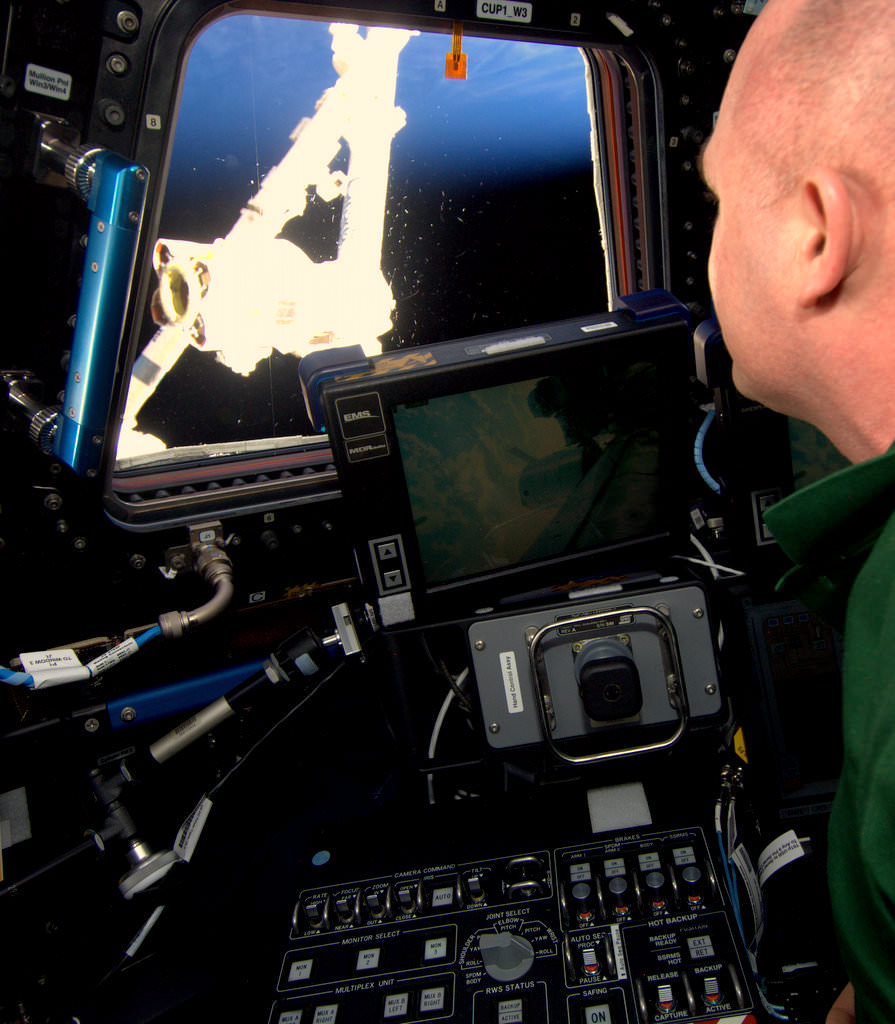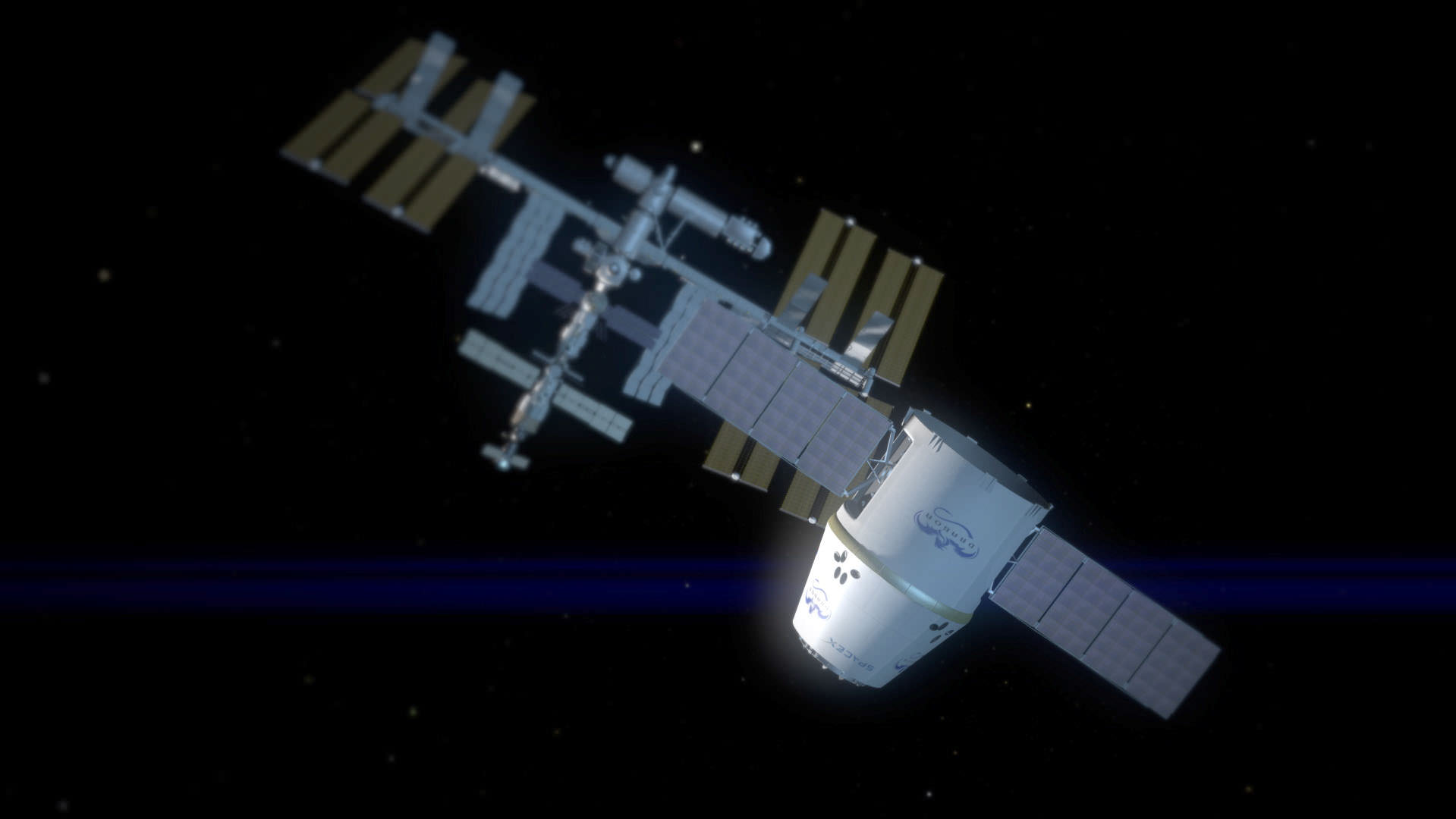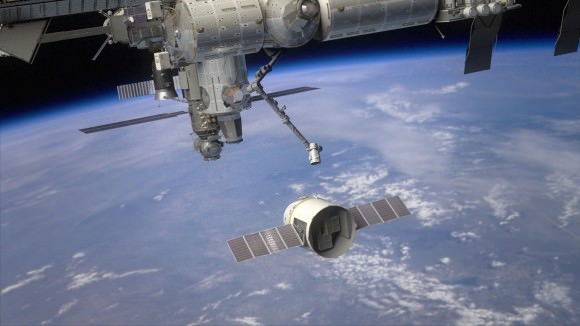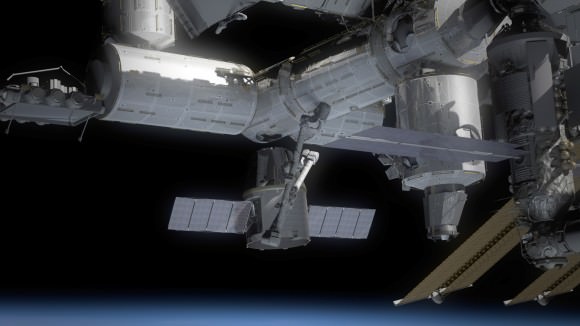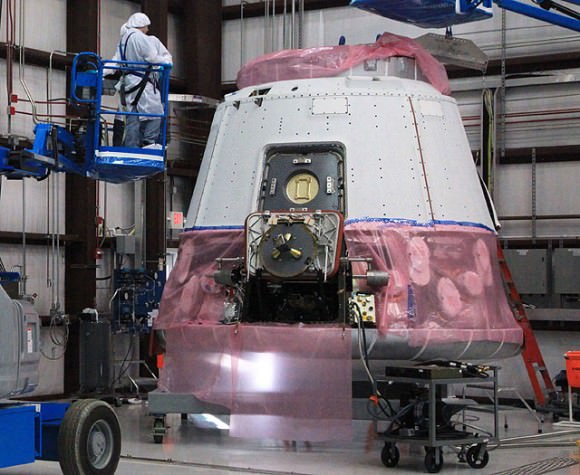[/caption]
With the upcoming historic launch of the SpaceX Dragon capsule to the International Space Station, astronauts in orbit have been getting ready for the first commercial spacecraft that will bring supplies to the station. Astronauts Don Pettit and André Kuipers will be manually capturing and berthing the Dragon capsule, using the ISS’s Canadarm2. Originally, current station commander Dan Burbank was to be the main arm operator, but with the delay in Dragon’s launch (it was originally scheduled for February 2012), Burbank will already be back on Earth by the time Dragon reaches the station, currently scheduled for May 3. So now, Pettit and Kuipers have had to take over the duties and learn their new jobs while in space. Without the high-tech simulators that NASA has at Johnson Space Center, how do the astronauts prepare and practice for this important event?
“We have a really neat capability here on Station,” Pettit said during a press conference last week. “I have it set up all the time, so I wake up in the morning and have a bag of coffee in my mouth and a cinnamon scone in one hand and flying the simulator with the other.”
The crew actually has two ways to practice for Dragon’s arrival.
“One is actually flying (practicing with) the Canadarm, which is the world’s best trainer,” Pettit said, “and then on station we have two space station computers which double as an Arm simulator, and it has a full set of the Arm hand controllers – the setup, which we call Robot allows us to fly track and capture trajectories just as if we were in the simulators in Houston.”
Initially Burbank would have been the main arm officer, with Pettit and Kuipers assisting. Now, Pettit and Kuipers will have to complete the task themselves, with the two of them doing all the things that the three of them were originally trained to do.
For the capture and berthing, Pettit and Kuipers will be in the Cupola, with Pettit as prime operator and Kuipers as second arm operator. “We will have arm operation in the (Destiny) lab as a ‘hot backup’ just in case of contingencies, and we can activate it there if needed.”
The two astronauts will use the Station’s Canadarm2 to first grab the spacecraft and then maneuver it into place to mate with the Harmony module’s Earth-facing docking port.
Pettit said the on-orbit training has been invaluable. “It is really good to have that type of capability,” he said.
The following animation from the Canadian Space Agency shows just how complex it is to capture a Dragon in space.
SpaceX’s launch and Dragon’s arrival will be the premiere test flight in NASA’s new strategy to resupply the ISS with privately developed rockets and cargo carriers under the Commercial Orbital Transportation Services (COTS) initiative. Even though it is technically a est flight, NASA isn’t about to pass up an opportunity to send supplies to the station. Dragon will carry about nearly 521 kg (1,150 pounds) of cargo, mainly food and some spare parts for the ISS. When Dragon departs, the station crew will load nearly 680 kg (1,500 pounds) of cargo to be sent back to Earth, since the Dragon capsule won’t burn up in the atmosphere like other supply ships — it will be recovered in the ocean.

